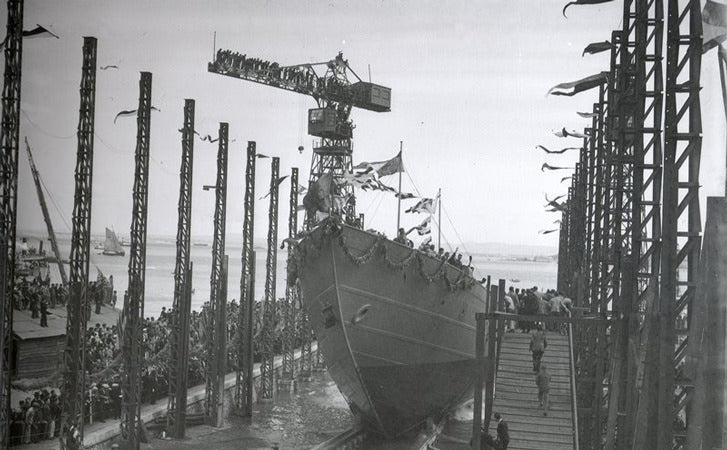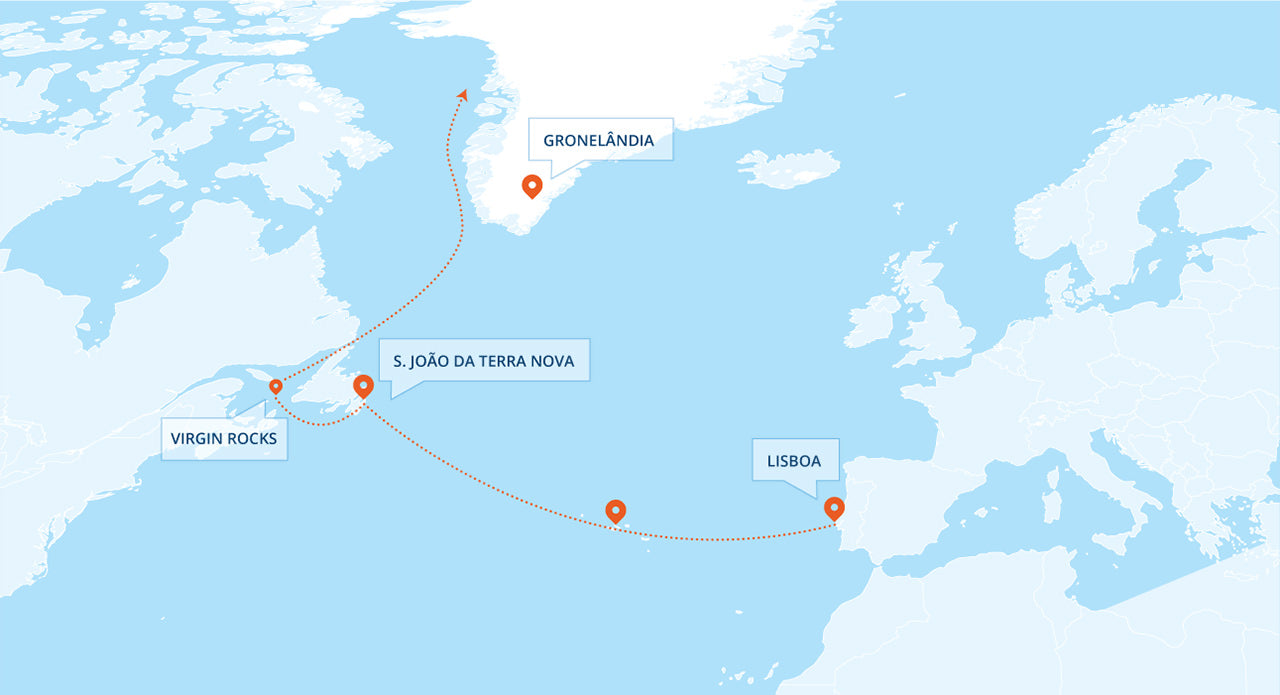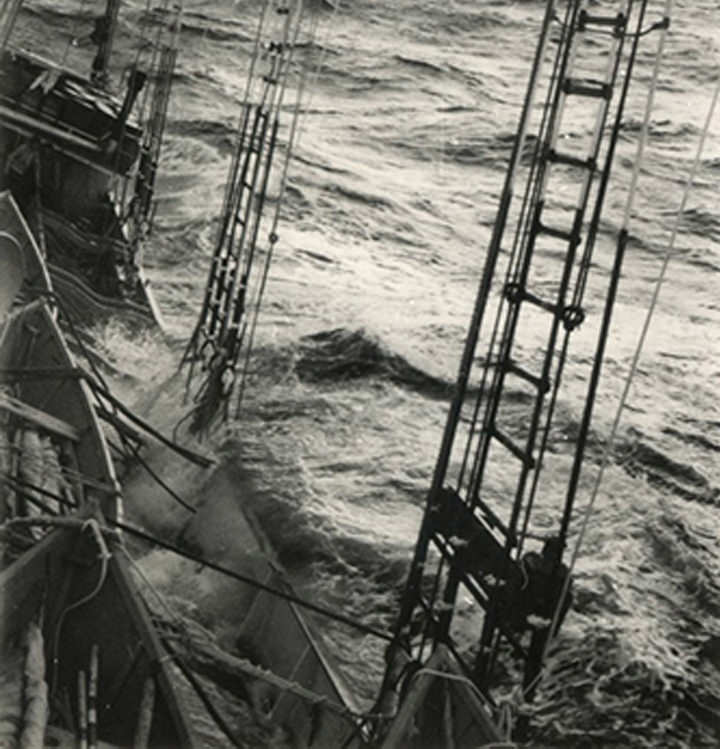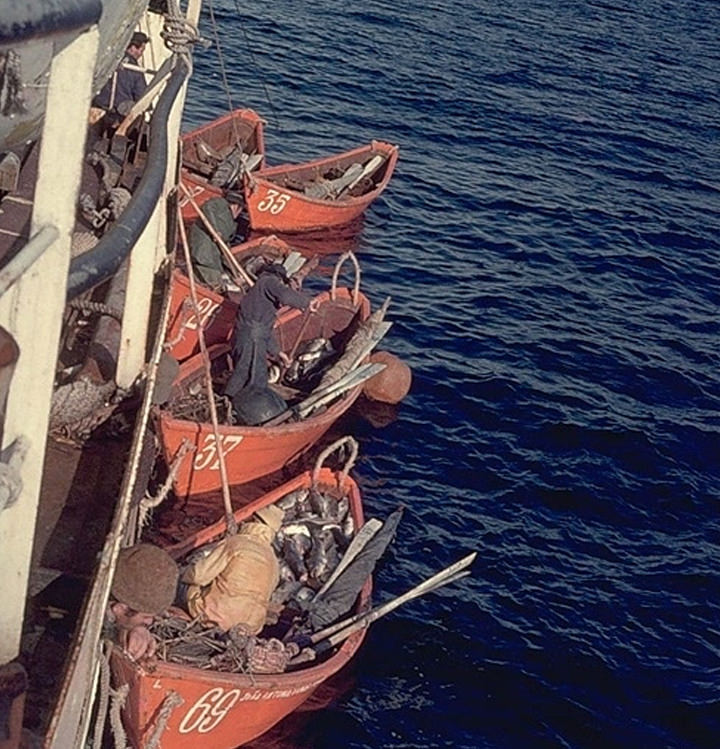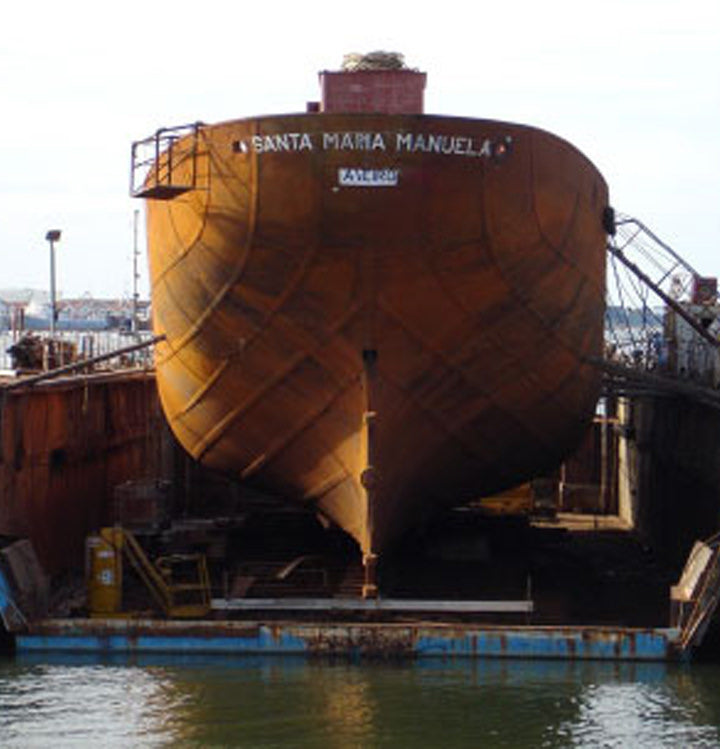This was a special day in Lisbon. Hundreds of people gathered on the docks of Rocha do Conde de Óbidos, in Alcântara, to witness the launch of two ships that had just been built: Santa Maria Manuela and Creoula. On that day the shipyards of Companhia União Fabril (CUF) closed for business to allow its employees to attend the ceremony. The workers climbed to the gantry cranes and filled the banks of this harbour on the Tagus waters. Everybody wanted to witness the launch of these twin ships that had been built in 62 days only and were destined to the cod fisheries in Newfoundland and Greenland. This was a solemn occasion, attended by the Head of State and a number of ministers, and represented a unique feat for the Portuguese naval industry.
Vasco Albuquerque d’Orey was the shipowner of the company Empresa de Pesca de Viana who commissioned the Santa Maria Manuela to the CUF shipyards. The hull is made of still, an important detail as it enables the ship to sail through ice-filled seas. The ship was baptised with the name of the wife of the shipowner, Maria Manuela, mother of 16.
Santa Maria Manuela was built for the cod fisheries. The departure of ships to the banks of Newfoundland and Greenland was a very emotional moment when the families gathered to bid farewell and relied also on the presence of personalities from the high ranks of the Church and the Government. The tears of the relatives contrasted with the feeling of expectation of the fishermen who had high hopes of returning to Portugal with the ships’ holds full of codfish. Fishing was their only means of living.
On the deck of Santa Maria Manuela were 50 dorys – small flat bottomed fishing boats. These vessels were lowered onto the water on the captains demand “Let us lower these boats and may God be with us.”
Each dory carried one fisherman. After touching the frozen seas each man followed his own destiny with the help of rudders or a small sail. Sometimes they sailed miles from the SMM and disappeared amidst the heavy fog. The fishermen spent 13 consecutive hours alone on the dorys. They cast hundreds of metres of line with hooks and bait into the water, hoping for luck.
If all went well a single fisherman could fish half a ton of codfish in a day. There are reports of dorys sinking under the weight of their catch, such was the will and enthusiasm of the fishermen. Upon their return on board men had dinner – soup, fish and a mug of wine – and proceeded to scale and salt the codfish. SMM would only return home when the ship’s holds were full of fish. “The moment when the national flag was hoisted and the journey back to Portugal began was the happiest day on board”, captain Vitorino Ramalheira recalls.
On the deck of Santa Maria Manuela followed dozens of dory boats – small boats of flat bottom. These vessels were only lowered onto the waters after the captain checked the necessary conditions and gave the order: “Let us lower these boats and may God be with us.” Each dory boat carried one fisherman. After touching the frozen seas each man followed his own destiny with the help of rudders or a small sail. Sometimes they sailed miles away from the SMM and disappeared amidst the heavy fog. The fishermen spent 13 consecutive hours on the dory boats and launched hundreds of metres of line with hooks and bait into the water. If all went well a single fisherman could fish half a ton of codfish. There are reports of dory boats that sank with excess weight, such was the will and enthusiasm of the fishermen. Upon their return on board men had dinner – soup, fish and a mug of wine – and proceeded to scale and salt the codfish. SMM would only return home when the ship’s holds were full of fish. “The moment when the national flag was hoisted and the journey back to Portugal began was the happiest day on board”, captain Vitorino Ramalheira recalls.
Vasco Albuquerque d’Orey was the shipowner of the company Empresa de Pesca de Viana who commissioned the Santa Maria Manuela in the CUF shipyards.
The hull is made of steel, which enabled the ship to sail through ice-filled seas.
The ship was baptised with the name of the wife of the shipowner, Maria Manuela, who gave the family 16 children.
The Santa Maria Manuela underwent a number of structural changes throughout the years, from the removal of the masts to the installation of a navigation bridge. The ship followed the evolution of time that would dictate the end of fishing by line and of the dorys.
In 1993 the ship was considered obsolete, it was dismantled and only the steel hull was left. The next year the Foundation Santa Maria Manuela was created, a project joining 17 institutions under one purpose: to recover the ship. But only in 2007, after the hull was bought by the company Pascoal would the renovation begin. This project took four years to finish.
On 10 May 2010 – on its 73rd anniversary – the SMM approached the Aveiro harbour with its sails up and hull painted white and proceeded to dock in its new pier in Gafanha da Nazaré (where the Pascoal company is based). This was the first day of the new life of this ship. On November 2016, Santa Maria Manuela was bought by the company Recheio, part of the Jerónimo Martins Group. After further modernization the SMM today is in beautiful condition and is used for marine tourism, sail training, company team development programs, deck events, film sets and environmental programs.
